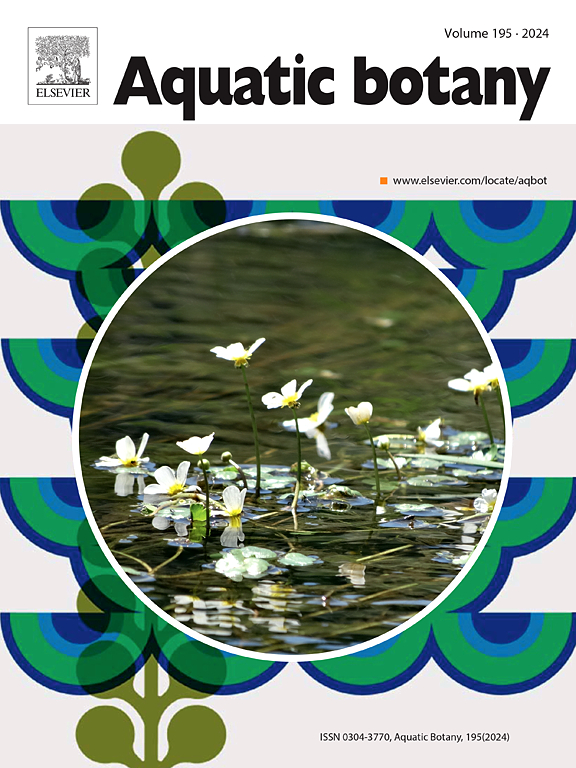Sargassum hatchery-based cultivation and mariculture techniques in the Philippines: Practices, challenges, and future prospects
IF 2.6
4区 生物学
Q2 MARINE & FRESHWATER BIOLOGY
引用次数: 0
Abstract
Sargassum species are ecologically and economically significant marine macroalgae with potential applications in food, pharmaceuticals, biofuel production, and coastal habitat restoration. While Sargassum hatchery and mariculture techniques are well-documented in China and South Korea, research specific to the Philippines remains limited. This review examines the distribution, seasonality, and cultivation practices of Sargassum in the Philippines, emphasizing the biological and socio-economic factors affecting its successful farming. Unlike temperate regions where growth is highly seasonal, Philippine Sargassum populations exhibit year-round growth with peak biomass during cooler months (November-February). Challenges such as substrate instability, biofouling, and predation hinder large-scale out-planting, while socio-economic barriers include a lack of policy support, infrastructure, and fluctuating market demand. Existing hatchery-based techniques, such as zygote liberation and vegetative fragmentation, show promise but require optimization to enhance survival and productivity. Future research should focus on refining grow-out conditions, improving out-planting success, and developing sustainable farming models suited to Philippine coastal environments. With targeted investments in research, policy, and industry collaboration, Sargassum mariculture in the Philippines has the potential to support economic development while promoting marine conservation.
菲律宾马尾藻孵化场养殖和海水养殖技术:实践、挑战和未来前景
马尾藻是一种具有重要生态和经济意义的海洋大型藻类,在食品、制药、生物燃料生产和沿海栖息地恢复方面具有潜在的应用前景。虽然马尾藻孵化场和海水养殖技术在中国和韩国有充分的记录,但针对菲律宾的研究仍然有限。本文综述了马尾藻在菲律宾的分布、季节性和栽培方法,强调了影响其成功养殖的生物和社会经济因素。与温带地区的生长高度季节性不同,菲律宾马尾藻种群在较冷的月份(11月至2月)表现出全年的增长,生物量达到峰值。诸如基质不稳定、生物污染和捕食等挑战阻碍了大规模外植,而社会经济障碍包括缺乏政策支持、基础设施和波动的市场需求。现有的基于孵化场的技术,如受精卵分离和营养碎片化,显示出希望,但需要优化以提高存活率和生产力。未来的研究应侧重于改善外植条件,提高外植成功率,并开发适合菲律宾沿海环境的可持续农业模式。通过在研究、政策和行业合作方面的有针对性的投资,菲律宾的马尾藻海水养殖有潜力在促进海洋保护的同时支持经济发展。
本文章由计算机程序翻译,如有差异,请以英文原文为准。
求助全文
约1分钟内获得全文
求助全文
来源期刊

Aquatic Botany
生物-海洋与淡水生物学
CiteScore
3.80
自引率
5.60%
发文量
70
审稿时长
6 months
期刊介绍:
Aquatic Botany offers a platform for papers relevant to a broad international readership on fundamental and applied aspects of marine and freshwater macroscopic plants in a context of ecology or environmental biology. This includes molecular, biochemical and physiological aspects of macroscopic aquatic plants as well as the classification, structure, function, dynamics and ecological interactions in plant-dominated aquatic communities and ecosystems. It is an outlet for papers dealing with research on the consequences of disturbance and stressors (e.g. environmental fluctuations and climate change, pollution, grazing and pathogens), use and management of aquatic plants (plant production and decomposition, commercial harvest, plant control) and the conservation of aquatic plant communities (breeding, transplantation and restoration). Specialized publications on certain rare taxa or papers on aquatic macroscopic plants from under-represented regions in the world can also find their place, subject to editor evaluation. Studies on fungi or microalgae will remain outside the scope of Aquatic Botany.
 求助内容:
求助内容: 应助结果提醒方式:
应助结果提醒方式:


